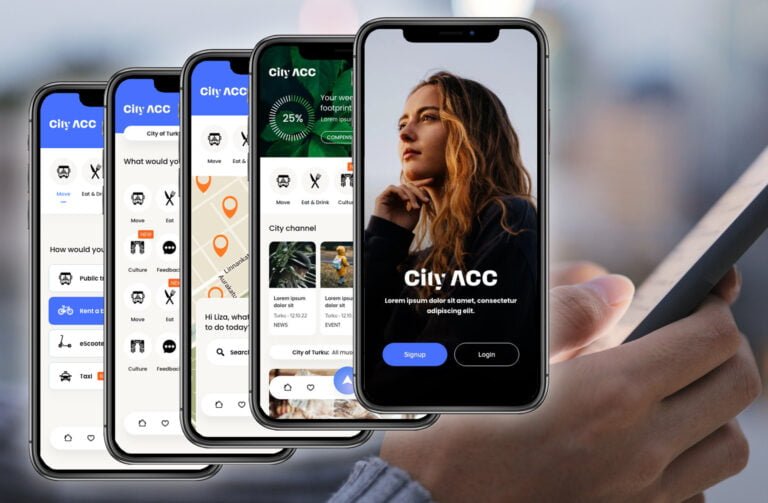By Timo Tuukkanen
COO of PayiQ
Back when I started in an earlier job, as a salesman of technical information control systems, I would follow announcements of public procurements closely. When I saw something that could be for us, I went to my boss to ask if we should make a bid. “Have we been involved in crafting the procurement?” he would ask. “We have not”, I would answer. “Well, then, do we know these guys?” “No, we don’t”, I’d answer. “Then forget it.” His verdict came with no room for opposition.
To someone not familiar with the world of public procurement, this may seem more like a scene for Goodfellas than sound and ethical business practice. Still, I’ve learned over the years, my boss had a strong point that stems not just from business interest, but also from public interest.
Much too often, the officials running the procurement have not had the time, the interest or the resources to dive deep into the issue at hand. The more advanced the product or service, the more resources should be dedicated to truly understanding what is needed and how this need can be met. A public procurement that’s put together without proper knowledge can turn out to be a messy, time consuming, expensive and discouraging affair for everyone involved. Doing one’s homework does not mean the procurement is rigged or that you are corrupt. It means it’s not destined for failure.
Here are a few observations we at PayiQ have made over the years regarding successful public procurements in smart mobility:
Keep the big picture in mind
How is the city developing as a whole? What are the trends, the plans, the constraints the outside forces? The old way of looking at mobility was to look at lanes between different hubs. Now you should look more at the hubs and complex mobility ecosystems that are growing around them. You should access, crunch and analyze data. When do people get on the bus and where? When do they get off, where and where do they go? Get a partner during your feasibility stage who is good at analytics-based traffic systems planning. For example, Ramboll, or another consultancy with the right skill set.
Understand change
Digital is not about replacing paper with devices. It is a tectonic shift in behavior. Therefore you should not look at ticketing or mobility as IT systems investment. Approach it as a service layer serving a changing world. How do people approach multimodality? How do changing payment systems affect behavior? When former car-lovers ditch their automobiles, what do they expect from mobility?
Don’t focus on things
Sometimes the starting point of procurement is that a city decides it needs a mobile app, a ticketing app, multimodality or maybe account-based ticketing. The focus is on the buzzword, the shiny new thing, not on the customer experience. Get to know the thinking and the technology behind the fancy words. Then decide if the “thing” is really what you need. What is the change you want to effect?
Get to know the market
The most important steps in a successful public procurement are taken before the actual bidding. The ivory-tower approach does not serve the end result or the taxpayers. You should get to know the market and the actors. Have an open dialogue with everyone. Use what you learned when you write the specs for your procurement.
Do not use experts that are also providers
As much as we encourage talking to providers at an early stage, please do not think of them as independent advisors. When you seek information, providers are great, but when you look for advice in the planning stages, resort to those who just consult and do not sell solutions and hardware.
Do not lock the provider organization before you know what is needed
Sometimes there is a rush to make a decision on the technology provider even if the goal is still somewhat unclear. If the public procurement process allows negotiated procedure, we strongly recommend that. First, get a lock on your goal, then consider if you can get what you need from one provider or a consortium (splitting the procurement and having to manage the whole yourself can be a nightmare), and only then start looking for the right provider.
Buying is a skill
Like most things in life, buying is a skill that can be trained. We see big differences between countries in their procurement culture and skill level. One country to benchmark is Sweden. Their process and criteria are transparent, well defined, and fair. Their public servants have been trained well to run and evaluate procurements.
When buying on behalf of a government or a municipality, the point isn’t to have companies bid against each other, but to make choices that create the most value to the taxpayers. The best results come from researching and negotiating as much as you can before the actual procurement.
Consider project alliancing
When there are several contributors working on an infrastructure project together, alliancing is something to consider. In alliancing, all project participants, including the public servants, work as an integrated team, sharing objectives and outcomes. In an alliance the risks are also often easier to handle.
Use the cloud
One of the many benefits brought by cloud-based services is the possibility of quick and economical pilots. When you need to test something, you do not need to invest in infrastructure to construct a proof of concept. Use a few tens of thousands on a pilot before throwing millions at the actual project.
Manage what needs to be managed
Managers should, of course, use experts, but they should not run away from running things. The manager’s job is to make decisions on how money is invested and what is being done. Technical folks often gravitate towards building specialized software even when there are perfectly fine white-label solutions available.
















